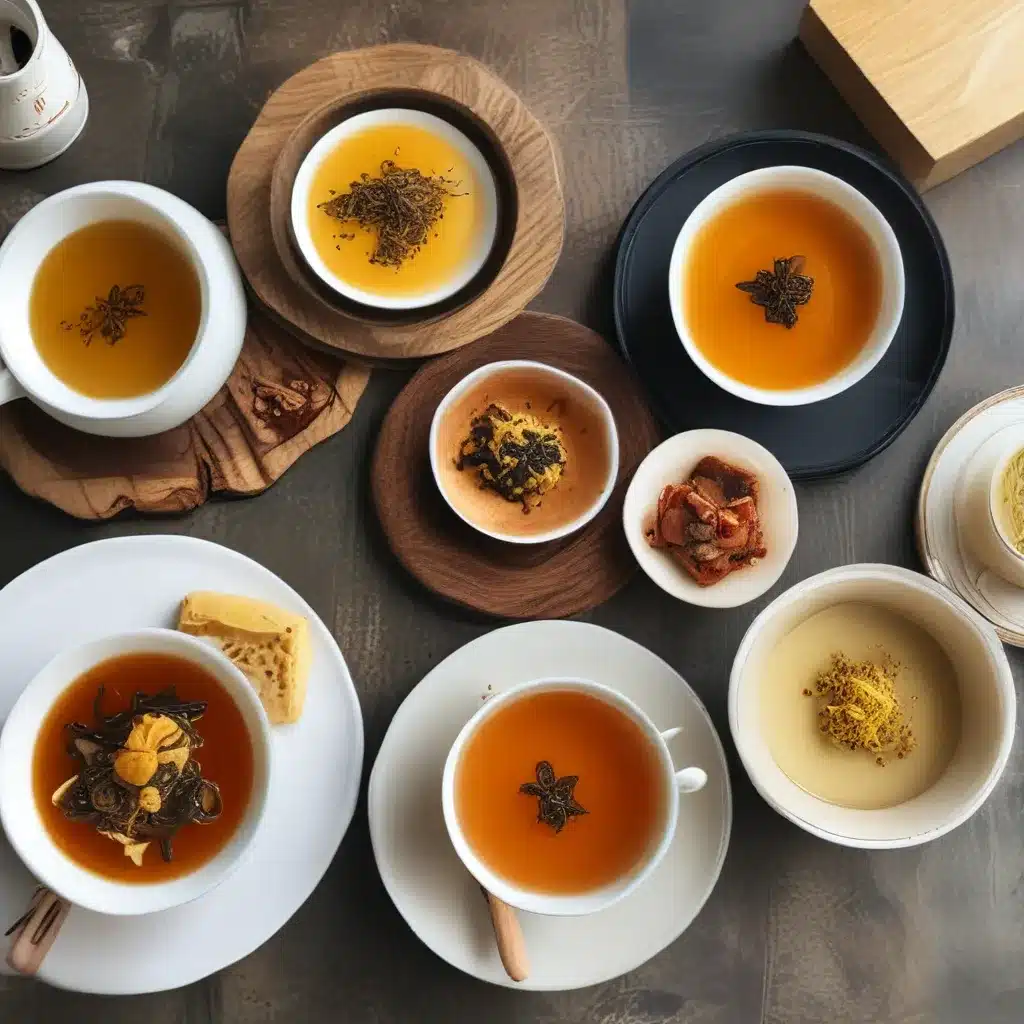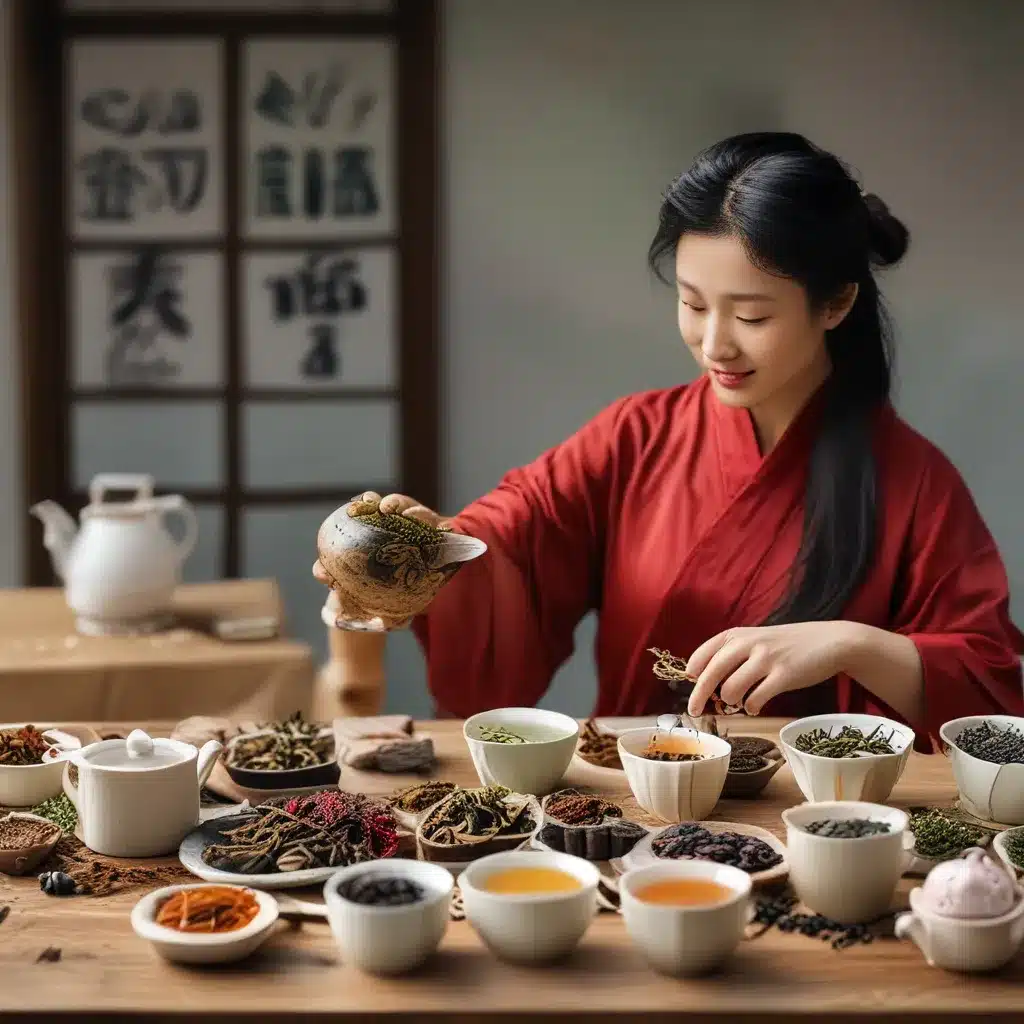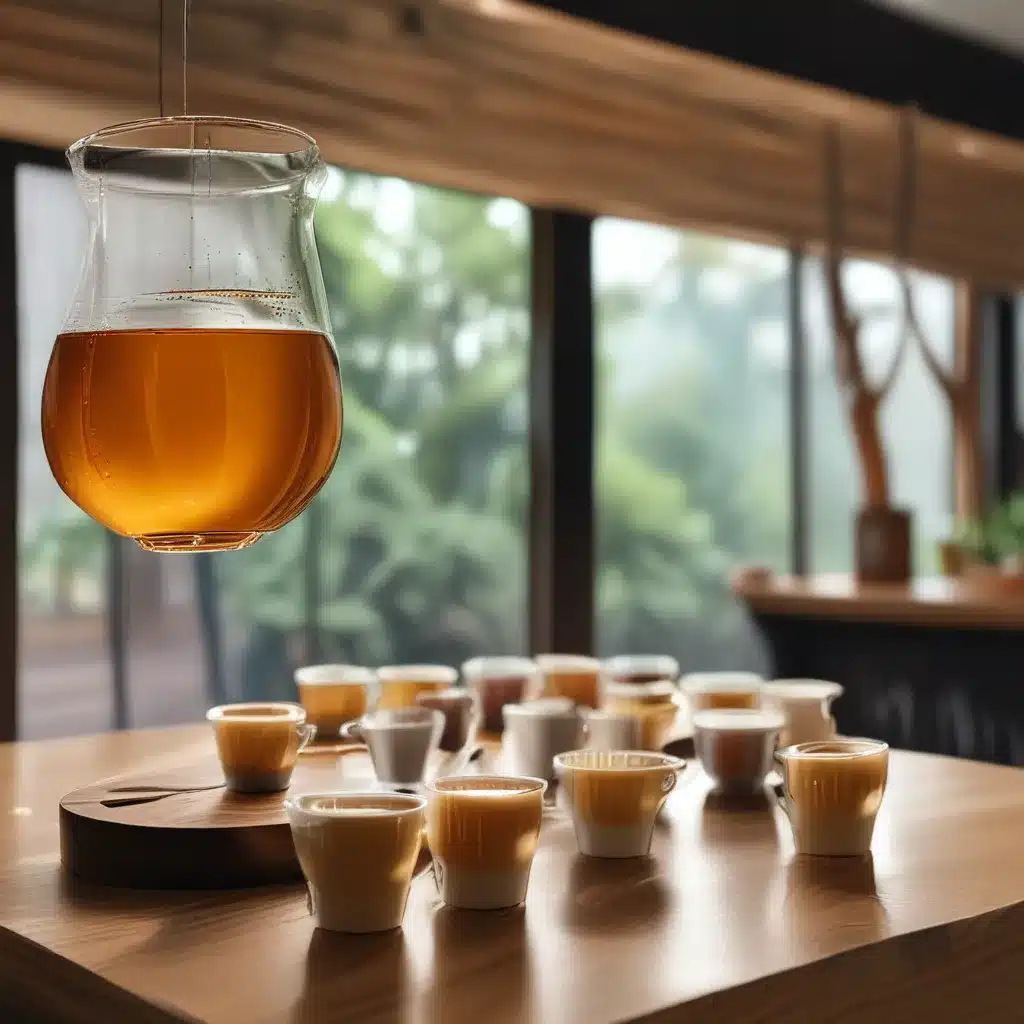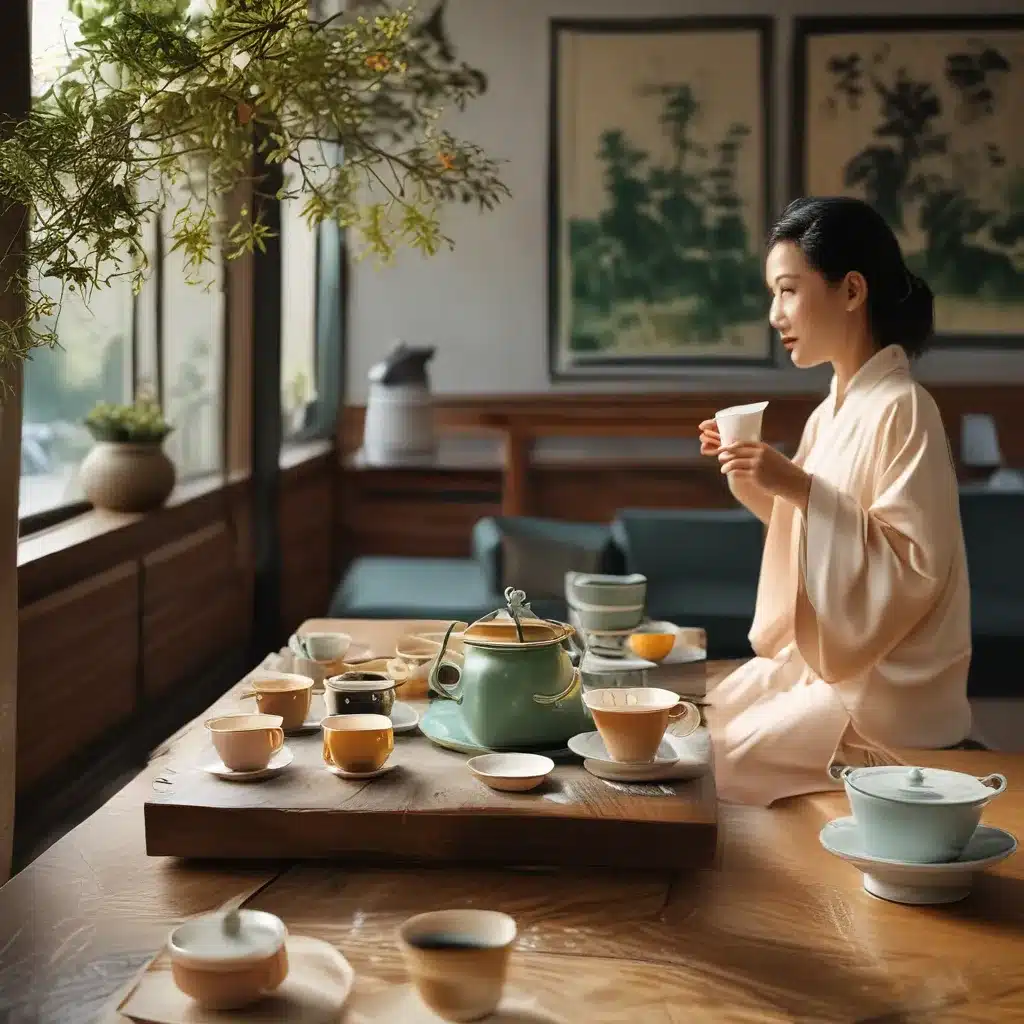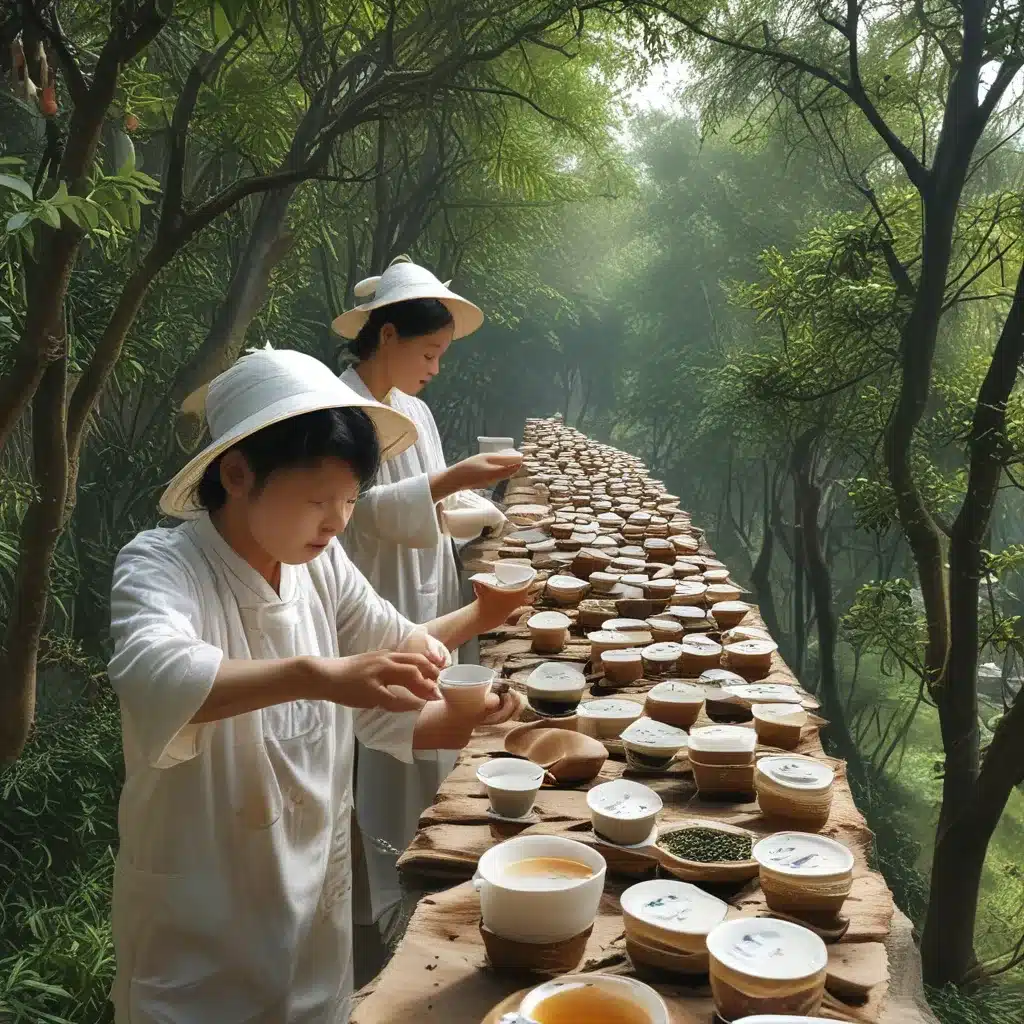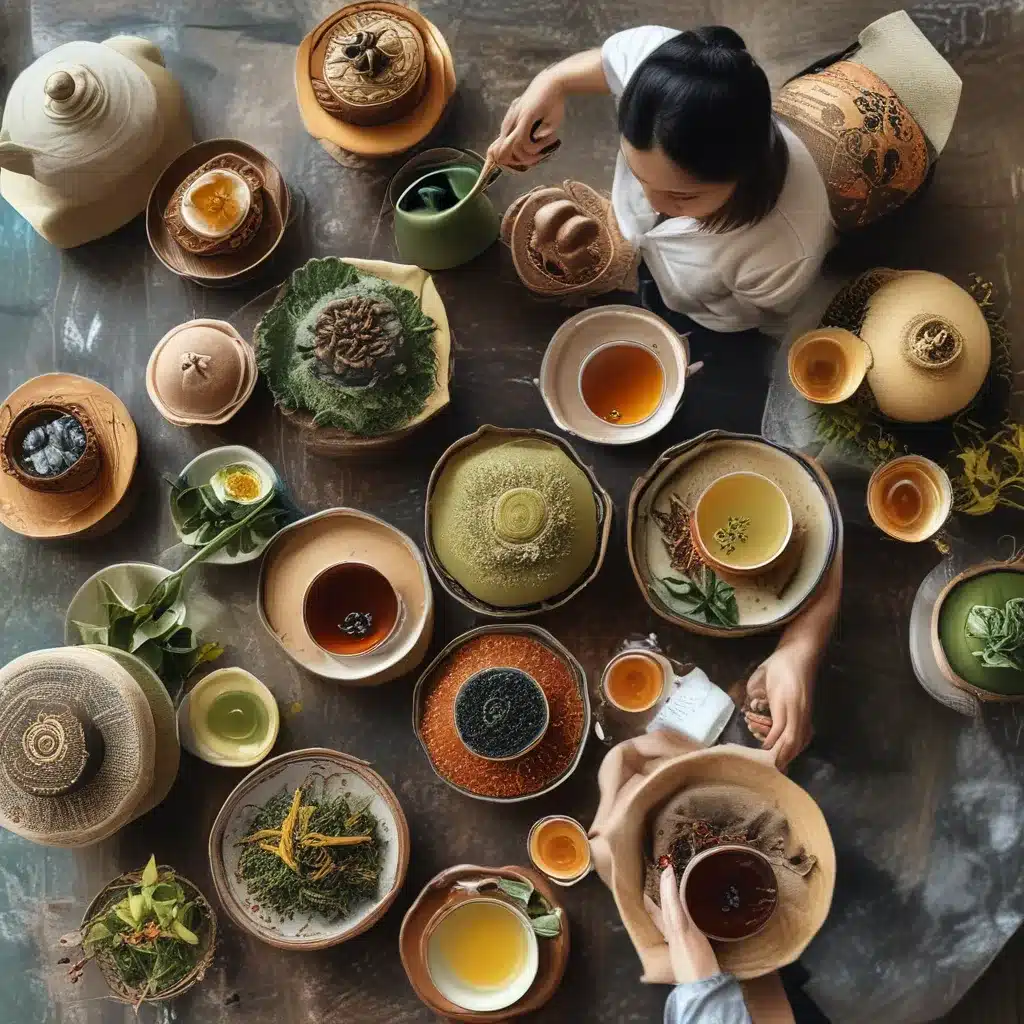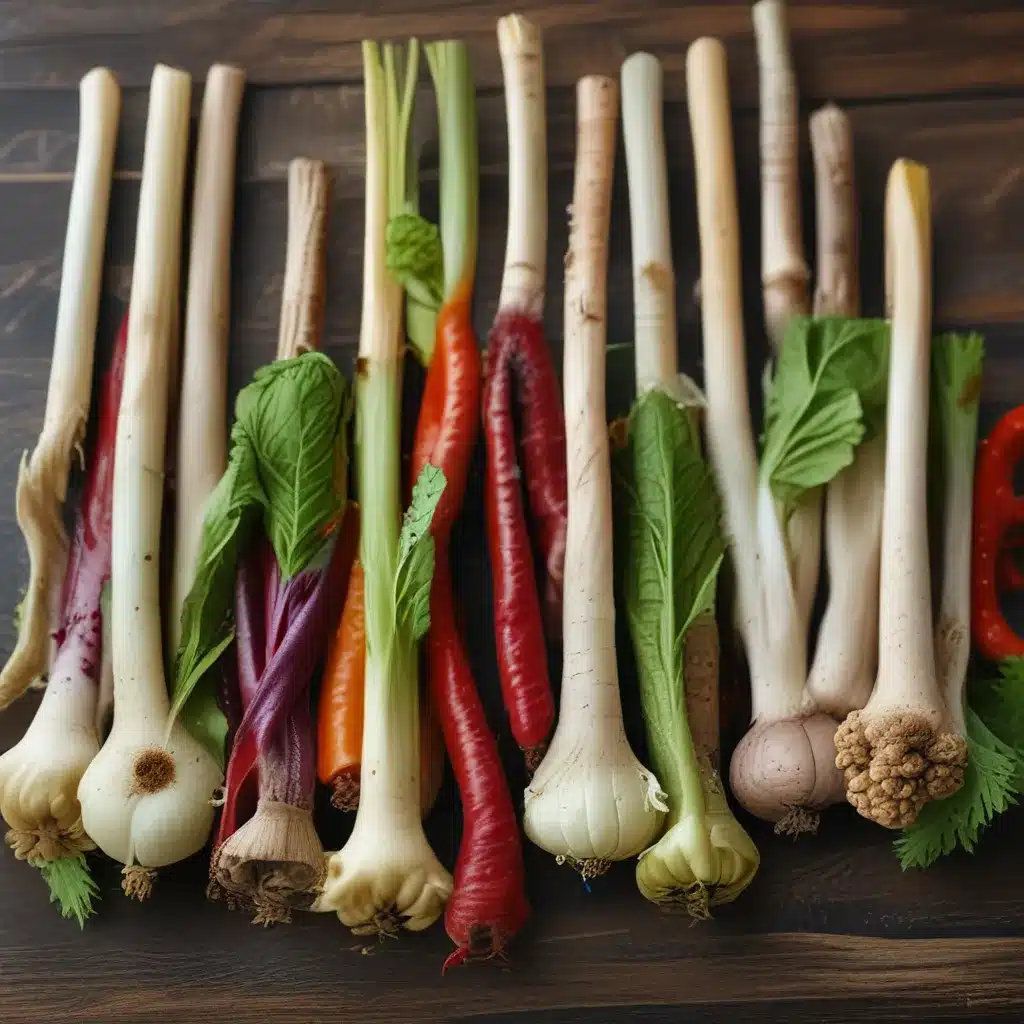
As I step into the vibrant kitchen of One Dragon Restaurant, the aroma of sizzling ginger, fragrant star anise, and earthy Szechuan peppercorns instantly envelops me. It’s a sensory symphony that transports me straight to the heart of Shanghai, where the ancient wisdom of traditional Chinese medicine (TCM) seamlessly blends with the culinary artistry of regional cuisine.
Growing up, I always marveled at the sheer variety of vegetables, herbs, and spices that took center stage in my grandmother’s cooking. From the crisp, vibrant greens of bok choy to the fiery punch of white radish, each ingredient seemed to possess a hidden power – not just to tantalize the taste buds, but to nourish the body and soul. Little did I know that these humble kitchen staples were in fact potent allies in the pursuit of holistic wellbeing, a knowledge that has been carefully cultivated and passed down for centuries in the rich tapestry of Chinese culinary traditions.
Research has now begun to uncover the remarkable healing properties of many Chinese vegetables and spices, shedding light on the intricate relationships between food, traditional medicine, and the human body. As I delve deeper into this captivating realm, I’m eager to share with you the hidden wonders that lie within the humble ingredients that grace the tables of One Dragon Restaurant and kitchens across China.
The Mighty Yin and Yang of Chinese Vegetables
In the world of TCM, the concept of yin and yang is fundamental – the delicate balance between opposing, yet complementary, forces that govern all aspects of life. This principle extends to the realm of food and nutrition, where the interplay of yin and yang properties is believed to be crucial for maintaining optimal health.
Take the humble bok choy, for instance. This member of the cabbage family is revered in Chinese cuisine for its versatility and nutrient-dense profile. But beyond its culinary appeal, bok choy is also prized for its yin-nourishing properties. Studies have shown that bok choy is rich in antioxidants, vitamin C, and folate, all of which help to counteract the yang-dominant nature of modern life – characterized by stress, environmental toxins, and a fast-paced, high-intensity lifestyle.
By incorporating bok choy and other yin-dominant vegetables like spinach, watercress, and bean sprouts into our diets, we can help to restore balance and support our body’s natural detoxification processes. The contrast between the cooling, moistening nature of these veggies and the warming, drying properties of yang-dominant foods like red meat, chili peppers, and ginger creates a harmonious symphony that nourishes us from the inside out.
The Spice of Life: Unlocking the Healing Power of Chinese Seasonings
While the healing power of Chinese vegetables is widely celebrated, the role of traditional spices and seasonings is equally fascinating and worthy of exploration. In the kitchens of One Dragon Restaurant, these aromatic wonders are not merely flavor enhancers – they are integral players in the pursuit of holistic wellbeing.
Take, for example, the mighty Szechuan peppercorn. This fragrant, tingly spice is a staple in many Szechuan dishes, adding a unique numbing sensation that dance
s across the tongue. But beyond its culinary prowess, Szechuan peppercorn has also been used in TCM for centuries to promote blood circulation, alleviate pain, and even support respiratory function.
Research has shown that the active compound in Szechuan peppercorn, known as hydroxy-alpha sanshool, possesses potent anti-inflammatory and analgesic properties, making it a valuable tool in the management of chronic pain and inflammation-related conditions.
Similarly, the humble star anise, with its distinctive licorice-like aroma, has been used in TCM to address a wide range of ailments, from digestive issues to respiratory infections. Studies have unveiled the antimicrobial and antiviral potential of star anise, suggesting that it may be a powerful ally in the fight against certain infectious diseases.
By incorporating these aromatic spices and seasonings into our meals, we can not only elevate the flavor profile of our dishes but also tap into the profound healing properties that have been revered in Chinese culinary traditions for centuries.
The Yin-Yang Balance of Ginger and Garlic
No discussion of Chinese healing spices would be complete without the dynamic duo of ginger and garlic. These two powerhouses are ubiquitous in the kitchens of One Dragon Restaurant, each bringing its own unique yin-yang properties to the table.
Ginger, with its fiery, warming nature, is a yang-dominant ingredient that has long been celebrated in TCM for its ability to promote circulation, alleviate nausea, and even bolster the immune system. Research has uncovered the potent anti-inflammatory and antioxidant compounds within ginger, making it a valuable tool in the management of a wide range of health conditions, from arthritis to cardiovascular disease.
Garlic, on the other hand, is a yin-dominant ingredient that is prized for its cooling, cleansing properties. Rich in sulfur-containing compounds like allicin, garlic has been shown to possess powerful antimicrobial and antiviral abilities, earning it a place as a natural immune-boosting superstar. Studies have also linked garlic consumption to improved cholesterol levels and reduced risk of certain types of cancer.
By striking a harmonious balance between the yin-yang properties of ginger and garlic, we can create a synergistic effect that nourishes the body and supports overall wellbeing. Whether sautéed, roasted, or incorporated into fragrant broths and stir-fries, these humble ingredients are true powerhouses in the realm of Chinese cuisine and traditional medicine.
Unlocking the Mysteries of Chinese Medicinal Herbs
Beyond the culinary realm, the world of Chinese medicinal herbs is a vast and fascinating landscape, brimming with untapped potential for holistic healing. At One Dragon Restaurant, we take great pride in incorporating these ancient botanical allies into our dishes, blending traditional wisdom with modern culinary artistry.
One such herb that has captivated my attention is the mighty goji berry, also known as the “wolfberry.” These vibrant, ruby-red berries have been used in TCM for centuries to nourish the liver, support eye health, and even boost the immune system. Research has revealed that goji berries are a rich source of antioxidants, vitamins, and essential minerals, making them a true superfood powerhouse.
Another intriguing herb that graces our menu is the delicate yet potent white peony root, or Bai Shao. In TCM, this root is revered for its ability to soothe the liver, regulate menstrual function, and even alleviate the discomforts of arthritis. Studies have uncovered the anti-inflammatory and analgesic properties of the active compounds found in white peony root, offering a natural alternative to conventional pain management strategies.
By seamlessly integrating these medicinal herbs into our culinary creations, we aim to provide our diners with more than just a delicious meal – we offer a holistic experience that nourishes the body, mind, and spirit, firmly rooted in the ancient wisdom of traditional Chinese medicine.
Bridging the Gap: The Art of Harmonizing Flavors and Healing
As I delve deeper into the fascinating world of Chinese vegetables, spices, and medicinal herbs, I’m struck by the intricate web of connections that bind these ingredients to the principles of traditional Chinese medicine. It’s a tapestry of flavors, textures, and healing properties that is truly breathtaking in its complexity.
At One Dragon Restaurant, we understand that the art of creating exceptional Chinese cuisine goes far beyond simply following recipes. It’s about striking a delicate balance between the yin and yang, the hot and the cold, the nourishing and the cleansing – all while ensuring that each dish tantalizes the senses and nourishes the body.
Take, for instance, our signature dish: the Ginger-Garlic Braised Bok Choy. By marrying the warming, yang-dominant properties of ginger with the cooling, yin-dominant nature of bok choy, we create a harmonious interplay that not only delights the palate but also supports overall wellbeing. The ginger’s circulatory-boosting effects are tempered by the bok choy’s detoxifying and yin-nourishing qualities, resulting in a dish that is both delicious and health-promoting.
But we don’t stop there. Throughout our menu, you’ll find the careful integration of traditional Chinese medicinal herbs, each one chosen for its unique healing properties and ability to complement the other ingredients in the dish. Whether it’s the goji berries that add a burst of antioxidants to our Szechuan-style Eggplant, or the white peony root that lends its soothing, anti-inflammatory properties to our Beef and Broccoli, every element is meticulously selected and harmonized to create a dining experience that nourishes the body, mind, and soul.
As you savor each bite at One Dragon Restaurant, I invite you to pause and appreciate the centuries-old wisdom that has been poured into every dish. From the humble bok choy to the mighty Szechuan peppercorn, these ingredients are more than just culinary delights – they are the embodiment of a holistic approach to health and wellbeing, one that has been refined and perfected over generations of Chinese culinary tradition.
So, come with me on this journey of discovery, as we uncover the hidden healing powers of the vegetables and spices that grace the tables of One Dragon Restaurant. Together, let’s explore the yin-yang dance, the interplay of flavors, and the timeless wisdom that has made Chinese cuisine not just a delight for the senses, but a true elixir for the body and spirit.

